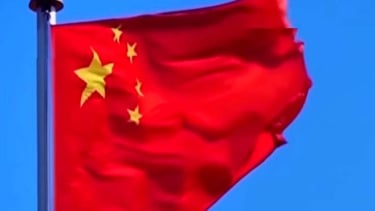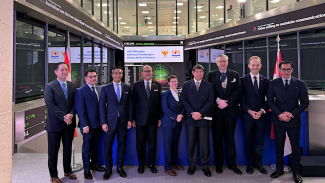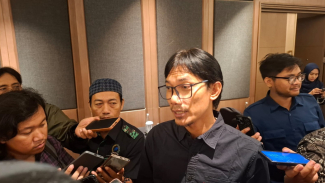Japan, the US Cooperate to Develop Hypersonic Missile Interceptor
- AP Photo/Evan Vucci
Tokyo – Japan and the United States (US) cooperate to develop of what the Japanese Ministry of Defense calls the world's first practical application of an interceptor missile for hypersonic projectiles.
This will improve deterrence against China, Russia and North Korea. Japanese Prime Minister Fumio Kishida is expected to meet with the US President Joe Biden and reach an agreement on Friday, the day of their trilateral summit at Camp David with South Korean President Yoon Suk Yeol
Hypersonic weapons fly low in the atmosphere at roughly five times the speed of sound. There have been examples of warheads changing trajectory in flight, such as when the warhead separates after launch and falls at a steep angle while approaching the target.
The weapons are harder to detect and track than ballistic missiles, which fly in a parabolic path passing through and out of the atmosphere.
Ilustrasi Rudal.
- brimstonemissile.com
Some believe that hypersonics are difficult to intercept unless they are close to the point of impact.
Current Japanese defenses entail launching SM-3 missiles at sea to intercept the incoming missiles while they are still outside the atmosphere or using Patriot PAC-3 surface-to-air guided missiles to intercept them after reentry.
This system has been criticized as not being up to the task of responding to hypersonics.
The two countries aim for the new interceptor to have the ability to turn in response to projectiles flying at high speed at low orbit and changing their trajectory.
If developed, it is expected to be able to intercept hypersonic projectiles before they come near the point of impact.
China is said to have successfully tested hypersonic weapons in 2021, and Russia claims to have used them in the Ukraine war.
North Korea has also test-fired hypersonic weapons. Japan and the US are under pressure to enhance their deterrence and response capabilities.
Cooperation to enhance detection and tracking will also be promoted. Missiles flying at low altitudes are difficult for ground radar to pick up from a distance.
Japan and the United States will work to create a "satellite constellation" that processes data from many satellites for high accuracy and early detection.





























